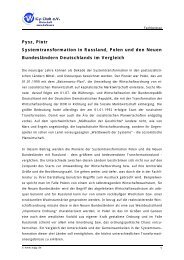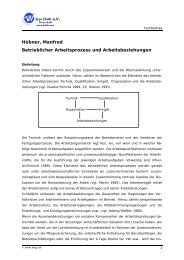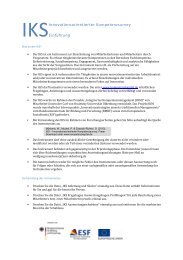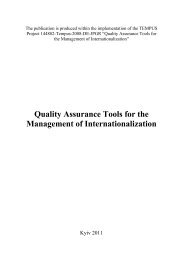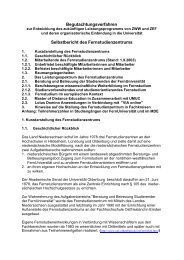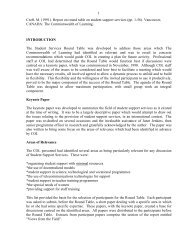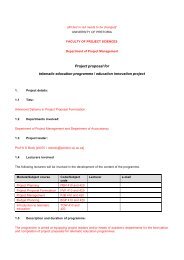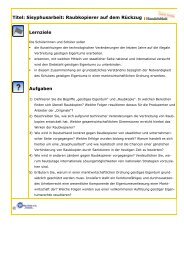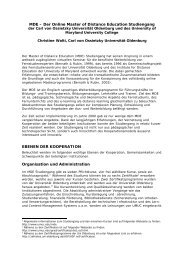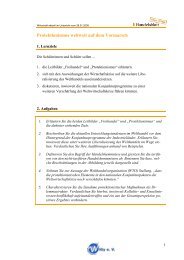Assessing the Costs and Benefits of Telelearning: A Case Study ...
Assessing the Costs and Benefits of Telelearning: A Case Study ...
Assessing the Costs and Benefits of Telelearning: A Case Study ...
Create successful ePaper yourself
Turn your PDF publications into a flip-book with our unique Google optimized e-Paper software.
Table 15<br />
Main Cost Findings<br />
Findings<br />
• The use <strong>of</strong> WebCSILE s<strong>of</strong>tware ra<strong>the</strong>r than Parti s<strong>of</strong>tware decreased tutorial <strong>and</strong><br />
student support time by half.<br />
• As this course was revised from an existing online course, course development costs<br />
were minimal.<br />
• There were no s<strong>of</strong>tware costs as WebCSILE was developed at OISE/UT.<br />
• Overhead costs are unknown as no system <strong>of</strong> keeping track <strong>of</strong> <strong>the</strong>se costs is currently<br />
in place. Future policy <strong>and</strong> plans around funding for online courses are currently<br />
being developed.<br />
• Based on <strong>the</strong> researched costs, revenue, <strong>and</strong> student enrollment, annual pr<strong>of</strong>it<br />
obtained for this course is $1,962.<br />
• Annual break-even enrollment for this course, based on <strong>the</strong> projected costs, revenues,<br />
<strong>and</strong> student enrollment over 5 years is 5.31 students. (This would increase with <strong>the</strong><br />
inclusion on <strong>the</strong> unknown overhead costs).<br />
• Students thought <strong>the</strong> course was worth <strong>the</strong> money it cost <strong>the</strong>m.<br />
• The costing methodology developed provided an accurate means <strong>of</strong> measuring <strong>the</strong><br />
full direct costs <strong>of</strong> online courses in a real context.<br />
Section C: <strong>Benefits</strong> <strong>and</strong> Limitations<br />
<strong>Benefits</strong> <strong>and</strong> limitations found for this course will be presented according to Bates<br />
(1995) ACTIONS model, (C=<strong>Costs</strong>, which have already been discussed). Results are<br />
based on both quantitative <strong>and</strong> qualitative data.<br />
Access<br />
Students were asked two questions regarding access to <strong>and</strong> flexibility <strong>of</strong> this<br />
course: 1. "If this course was not <strong>of</strong>fered in this delivery method, I would be unable to<br />
complete it", <strong>and</strong> 2. "I like this delivery method because it gives me flexibility in my<br />
studies (e.g. time, place, location)". Responses are based on a five point Likert type scale<br />
(1 = strongly disagree, 5 = strongly agree) <strong>and</strong> are shown in Table 16.<br />
Table 16<br />
Student Response to Access <strong>and</strong> Flexibility <strong>of</strong> <strong>the</strong> Research Methods Course<br />
Statement<br />
Unable to complete<br />
<strong>the</strong> course without<br />
online delivery<br />
Response<br />
Distributions<br />
Number <strong>of</strong><br />
Students<br />
Mean St<strong>and</strong>ard<br />
Deviation<br />
SD SA<br />
Responding<br />
0 2 1 2 9 14 4.29 1.14<br />
Flexibility 1 0 0 3 10 14 4.50 1.09<br />
24



